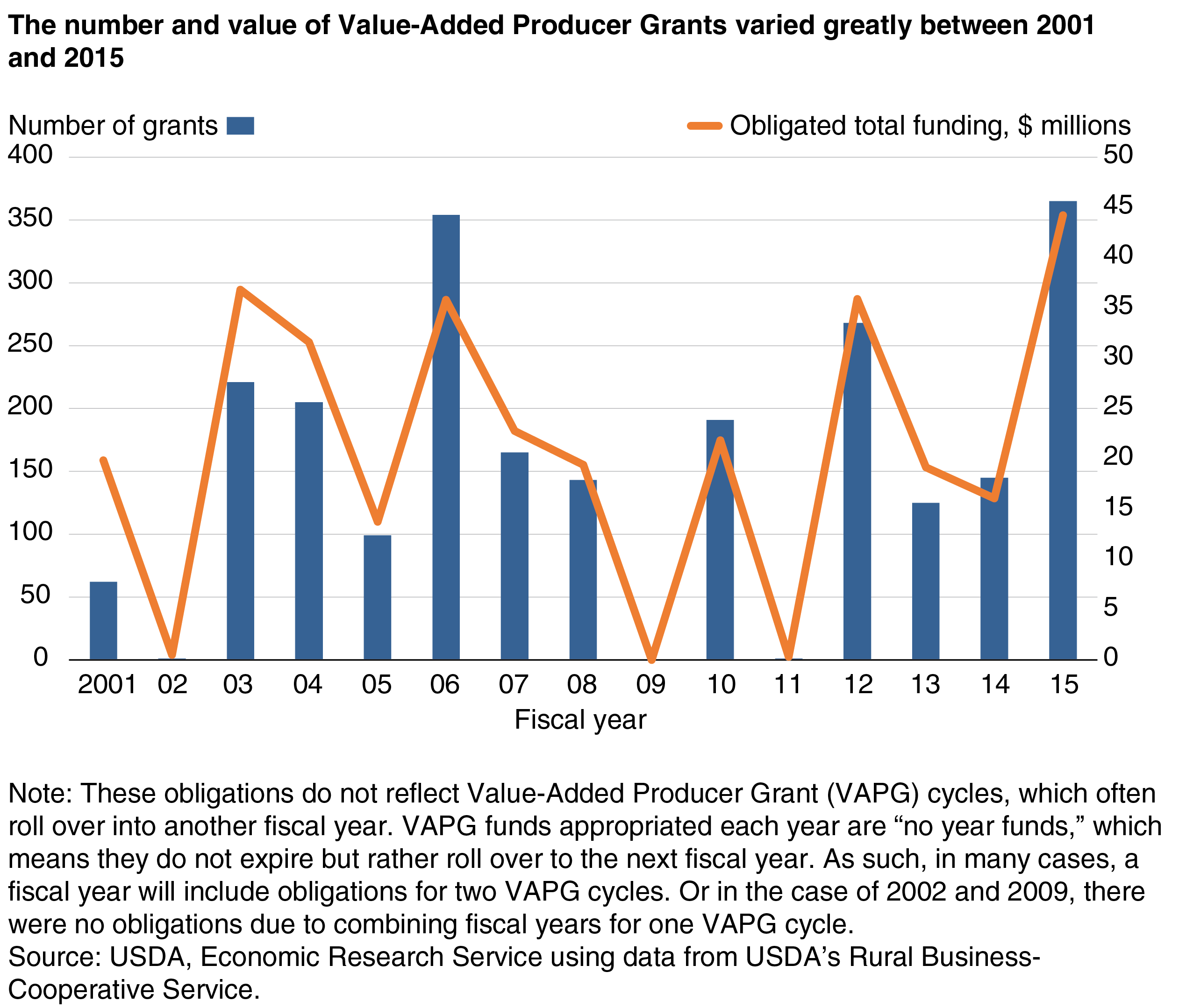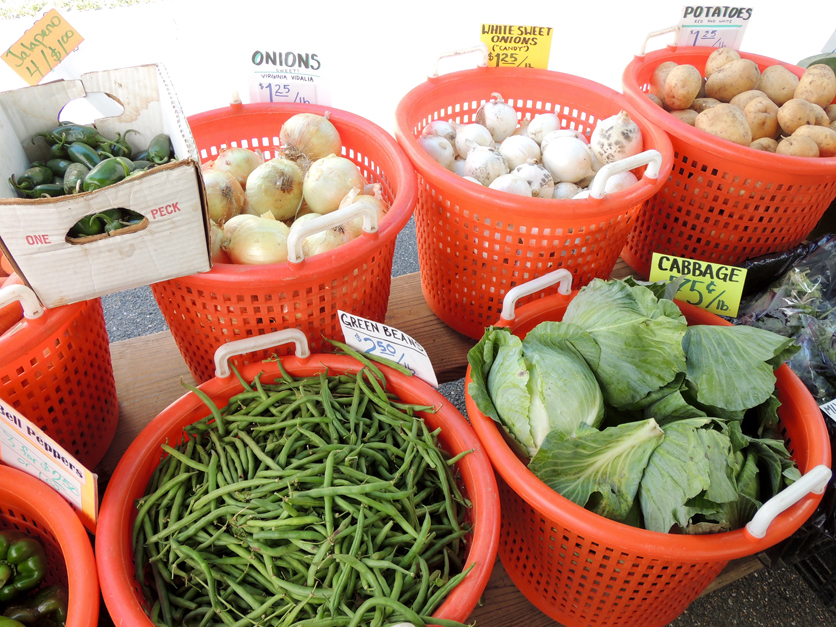When House and Senate conferees meet today to hammer out a new farm bill, one urgent request comes from 306 organizations seeking $60 million a year in “permanent funding for the Local Agriculture Market Program (LAMP).”
In their Aug. 29 letter to conferees, the groups point out that despite the current plunge in farm-sector returns, “farmers and food producers that have participated in the local and regional food sector have experienced a strong return on investment.” Data show, the letter notes, "farmers who market food directly to consumers have a greater chance of remaining in business than similarly sized farms that market through only traditional channels.”
The groups point to a National Census of Agriculture survey which shows in 2015 over 167,000 U.S. farms “produced and sold food locally through food hubs and other intermediaries, direct farmer-to-consumer marketing, or direct farm to retail.” The survey concluded “These sales resulted in $8.7 billion in revenue for producers and, according to USDA, the local and regional food sector is expected to reach $20 billion in sales by 2019.”
The mandatory LAMP funding provisions included in the 1,006-page Senate farm bill proposal – but not in the 641-page House version – are designed to build on this accelerating, profit-generating shift toward local and regional food supply chains. LAMP advocates say this shift has been driven by past farm bill programs: USDA’s Value-added Producer Grants Program (VAPG) and the Farmers Market and Local Food Promotion Program (FMLFPP) which includes the Farmers Market Promotion Program and the Local Food Promotion Program (LFPP). These programs expire Sept. 30 unless they are either reauthorized in the new farm bill or a short-term extension of the 2014 legislation.
The LAMP letter concludes the Senate’s proposed permanent funding for local food programs to include VAPG and the expanded FMLFPP will “grow farm and food-based value-added businesses, local and regional markets, and strengthen local supply chains that support farm profitability.”
Along with boosting farm-sector profits, advocates note USDA grants have supported “nutrition education and healthy food incentive programs that work to help shoppers purchase and consume more fruits and vegetables grown by local producers.” The letter sees this support helping even low-income consumers, noting that in 2017 Supplemental Nutrition Assistance Program participants “spent $22.4 million in benefits at nearly 7,400 farmers markets nationwide,” a 130 percent increase since 2012.
Demonstrating broad national support for reauthorizing mandatory federal funding for USDA’s local food programs, the LAMP demand comes from 51 national organizations including American Farmland Trust, Farmer Market Coalition, Healthy Food America, National Cooperative Business Association, National League of Cities, National Sustainable Agriculture Coalition and the Union of Concerned Scientists. The advocates also include 255 regional groups in 41 states from Alabama to Wisconsin. The groups range from the Alabama Sustainable Agriculture Network and the California Alliance of Farmers’ Markets to the West Texas Growers and Producers Association and Wisconsin Farmers Union.
Interested in more news about the farm bill, trade issues, pesticide regulations and more hot topics?
Sign up here for a four-week Agri-Pulse free trial. No risk and no obligation to pay.
More support for the endangered VAPG program comes from a recent USDA report: USDA’s Value-Added Producer Grant Program and Its Effect on Business Survival and Growth. The 38-page report released in May concludes that “VAPG recipients were 89 percent less likely to fail two years after receiving the grant than the group of similar nonrecipients.” And the survival benefits continue: “VAPG recipients were still 71 percent less likely to fail than similar nonrecipients four years after receiving a VAPG and 57 percent less likely to fail than nonrecipients after six years.”

To boost business survival rates, the VAPG program has offered up to $75,000 in planning grants and up to $250,000 in working capital grants. Producers must match each award with equal cash or in-kind funding.
Research Economist Anil Rupasingha of USDA’s Economic Research Service, the lead author of the VAPG report, tells Agri-Pulse that to avoid any bias in comparisons, the report matched each grant recipient studied “to a very similar grant non-recipient in terms of start year, age, size and growth of employment, industry type, state where they are located, whether the business is an independent establishment or an entity of a multi-unit firm, and same locale.”
While the House farm bill proposal would reduce VAPG funding, Rupasingha explains that “Our results show that the risk of failing decreased significantly for businesses that received larger grants, compared to those that received smaller grants, including the ones that received no grants. This means that not just receiving a grant, but the size of that grant also matters. This implies that larger the grant, the lower the risk of exit for the recipient business compared to the non-recipient.”
Rupasingha cautions that VAPG recipients may have been such good prospects for funding that they obtained other financial capital. Therefore, he says, “the study cannot claim that the positive impacts resulted solely from receipt of a VAPG.” But “even in that case,” he says, “the VAPGs may have helped recipients to leverage other sources of financial capital.”
A USDA Rural Development (RD) spokesperson said VAPG demand “has typically exceeded the availability of funds.” Since the program began in 2001, RD has processed some 7,700 applications resulting in over 2,900 grants. In 2018 alone, the agency “received 536 applications requesting $77.1 million and approved 249 awards utilizing total available funding of $36.2 million.” For the 2001 to 2015 period, the program made 2,345 grants to farmers and ranchers, totaling $318 million for an average $136,000 per grant.
RD sees continuing opportunities “to deliver innovative and creative products and markets” to create “new or expanded opportunities in this sector for agricultural producers.” Besides food products, the VAPG program has supported “a wide array of non-food, bio-based products and markets and new uses for a variety of crops” in response to increasing consumer demand for “sustainably produced products.”
One company launched with a VAPG grant back in 2003 and awarded a new $250,000 grant this year is Farmers’ All Natural Creamery in Wellman, Iowa. Mindy Seiffert, a director at the creamery’s parent, the Open Gates Group, tells Agri-Pulse that the 2018 grant has been essential in launching “our 100 percent AGA (American Grassfed Association) certified organic kefir, which in turn supports the grassfed-dairy producers we get the milk from.”

Mindy Seiffert, Open Gates Group
Seiffert says the creamery started shipping its new kefir (a fermented milk drink) to Midwestern customers in April and expects to “expand our distribution to the Rocky Mountain and Southwest regions in 2019” thanks to the grant.
Blair Andrews, responsible for sales at Natural Dakota Soy in Aberdeen, S.D., joins Seiffert in advising any VAPG applicant to start by hiring an experienced grant writer . . . and then plan on at least six months of number crunching to qualify for a competitive grant.
Andrews tells Agri-Pulse that her extruded soybean plant’s VAPG grant is earmarked for buying non-GMO soybeans because “consumers are all saying that they want non-GMO products, so we’re hoping to move toward buying all non-GMO soybeans in the future.” Thanks to this USDA support, she says, “We’re going to be able to reach out to a lot of new customers.”
(Read about bipartisan support for the LAMP provisions here: Small-farm advocates look to protect gains in farm bill talks.)
For more news, go to: www.Agri-Pulse.com


